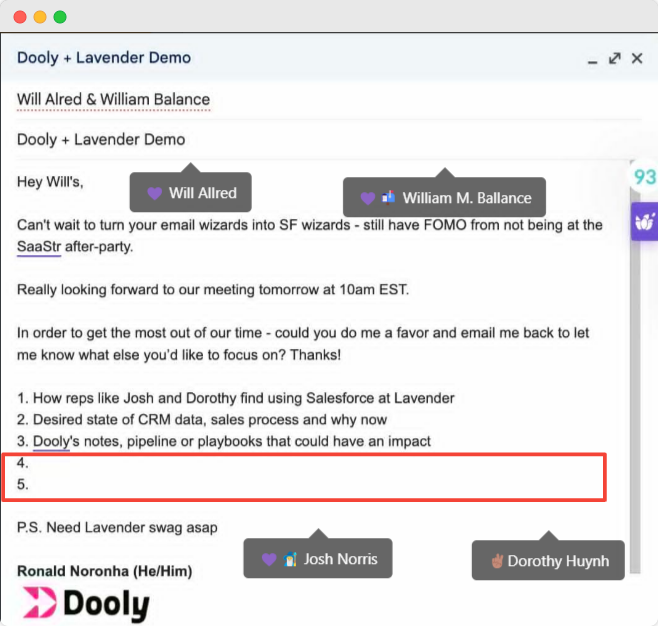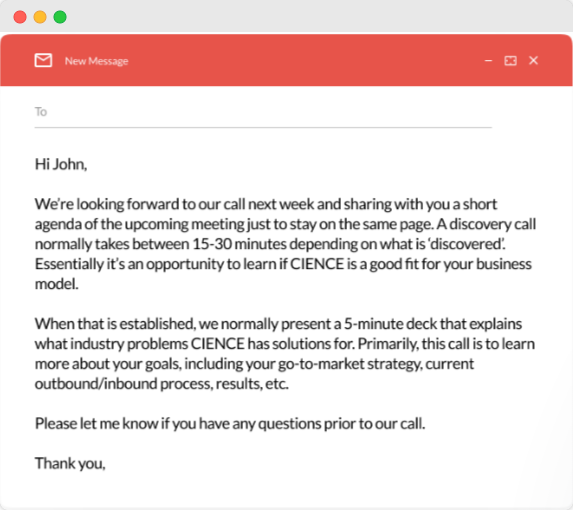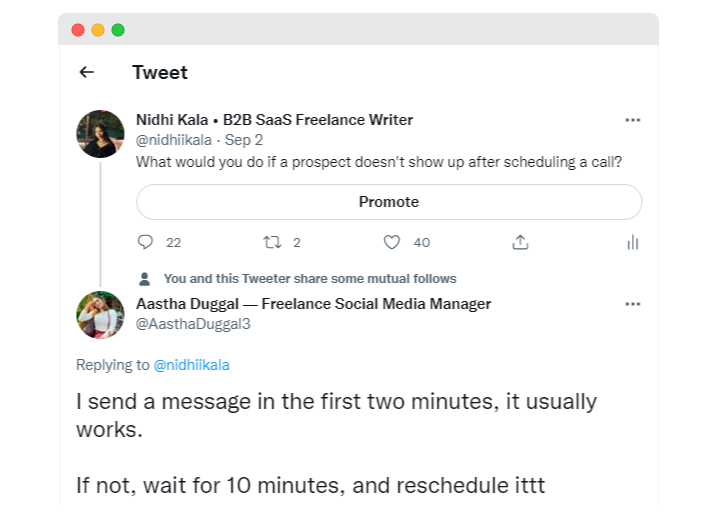Have you ever been in this situation?
It’s Tuesday morning. You’re sitting beside your laptop with your formals on. 10 minutes later, you open the browser and start typing “how to reduce no-shows appointments.”
Backdrop: You scheduled a sales call with a prospect. You did your research and prepared for the call. But your prospect didn’t show up.
Situations like these make you feel terrible—all your time that went into preparing for the appointment is wasted. And if this happens to you multiple times in a row, you resort to self-doubt and start searching for answers.
But guess what?
You can break the no-show loop with the 4 proven ways we curated for you.
Table of contents
What are the different situations where you are likely to face no-shows?
While no-shows can be observed in every industry and business model, you’ll find them prevalent in sales, consulting, coaching, and telehealth, to name a few. It’s because meetings are at the core of these businesses.
Though, you must have experienced mostly three no-show situations:
- Client no-show: you schedule a meeting with an existing client—maybe for a project discussion, progress report, or feedback—but they don’t show up.
- Demo no-show: you schedule a product demo with a potential customer to help them understand your product better, but they miss the meeting.
- Sales call no-show: when you schedule a sales call with a qualified lead to introduce your product or service, but they don’t attend the call.
4 ways how to reduce no-show appointments
A study revealed that 56% of sales no-shows occurred because the prospects were “overwhelmed by internal events.” Some other reasons were:
- invited to another meeting (10%)
- stuck into an emergency (6%)
- faced technical issues (5.2%)
So, to prevent these no-shows from creeping into your sales call strategy, treat the root cause. Let’s see how.
Limit the days of meeting
Your prospects will likely lose interest in the meeting if you keep a long gap between the initial conversation and the call.
Why? Because prospects usually respond within 1 to 2 days to demo/call requests. And, if you schedule the meeting beyond the first week of your interaction—they lose curiosity.

Here’s how you can decide the time frame to keep them interested.
- Inbound leads: schedule a call within 2-3 days because they are the ones to knock on your doors and are unlikely to miss the meeting.
- Outbound leads: schedule a call within 5 days because you reached out to them, and they need time to nurture.
Why this works: The prospects feel a sense of urgency when the time frame window is open for a limited duration. Result: they don’t have second thoughts while scheduling the call.
Also read: 10 Schedule Coordination Tips for Remote and Hybrid Teams
☝️ Sidenote
Keep in mind that the number of demo no-shows increases when it’s a Friday.
Send the high-level meeting agenda
A meeting agenda puts you and the prospect in a timebox—both parties know what to expect from each other in a particular time frame.
This piques the prospect’s interest, and they look forward to the call.
So share a bulleted meeting agenda with your prospects with the meeting invite (or a separate email), including the following points.
Prospect’s challenges
What is your prospect’s biggest challenge?
Emphasize the pain points your product or service addresses in the meeting.
Talking points
Share your talking points—what will you discuss in the meeting?
Here’s how Dooly sent a detailed meeting agenda to their prospect.

Why this works: While Ronald shares his list of talking points, he asks the prospect to email his expectations from the demo call, leaving a blank space at the end.
The flow of the meeting
Specify how you’ll transition from one talking point to another with proper time slots. It ensures your prospect you have a fixed schedule in place and won’t take extra time.
Here’s an example.

Next steps
After the meeting, should they book:
- another meeting with you to discuss this further, or
- a free trial of your product
Clarify your expectations, so they know where they are headed after the call.
Onboarding details
Share onboarding details upfront because it reflects your confidence in your product/service. These details include:
- Sign-up process
- Welcome email
- Login and password management
- Integration support
- Product walkthrough
☝️ Sidenote
This meeting agenda works best when conducting a demo or a sales call.
Follow up instantly
If the prospect doesn’t come to the meeting within 5 minutes, follow up with them on the platform you last interacted.
In your follow-up message, mention how long you’ll wait for them and offer them an option to reschedule.
Aastha Duggal, a freelance social media manager for eCommerce brands like Userinput.io, preaches the same.

Also read: How to Effectively Schedule Appointments: A Step-By-Step Guide for Business Owners
Send email and text reminders
To add an additional layer to your question “how to reduce no-show appointments”—send appointment reminders.
Why? If a prospect has scheduled a meeting far before the first conversation, they will likely forget about it. But sending reminders keeps them informed of the meeting.
Usually, two reminders—one 24 hours and the other 1 hour before the meeting—do the job well.
- 24 hours before the meeting: This reminds prospects of the meeting, increasing their show rate.
- 1 hour before the meeting: This informs them of the meeting and urges them to prepare for it.
People use emails daily for most of their business communication. So, it’s likely they’ll check the appointment reminders first over this channel.
You can send these reminders manually, but you shouldn’t. Here’s why:
- What if you forget to send the reminder, even after marking the date on your calendar?
- You probably have 3+ meetings scheduled weekly, so how many prospects would you send reminders to each day?
- Wouldn’t it be irritating to leave the task at hand to write and send these reminders?
Your best option is to automate the process.
💡 Pro tip
Use 3veta’s automated appointment reminders to nudge your prospects about the meeting it automatically sends two reminders to the attendees—first, 24 hours before the meeting, and second, 1 hour before, saving you tons of time.
Also read: How Small Business Scheduling Software Can Help You Thrive
Create a no-show appointment policy
A no-show appointment policy is a set of guidelines that signing parties (you and the prospect) must follow if they fail to attend a scheduled appointment.
It assures you and the prospect that necessary steps will be followed if either of you fails to attend the meeting, reducing no-show rates.
Here’s how to outline a no-show appointment policy for you and the prospect.
If the salesperson doesn’t show up, mention how you’ll cover up for the delay.
For example, Give a 20-50% discount on your product subscription for a limited time frame.
If the prospect doesn’t show up, mention:
- the time frame beyond which they can’t cancel the meeting
- if there’s an option to reschedule the meeting (consider sickness and emergencies while adding this clause)
- the no-show appointment fee if they don’t show up at the rescheduled meeting either.
Here’s how you can set up the fees for no-show appointments:
Ask for a fixed amount of payment
Take the payment upfront when the prospect schedules the appointment ($100, for example). If it’s a no-show, keep the appointment fee and refund the rest.
Set up paid meetings
Make your appointments paid. Keep these appointments open to all the prospects—qualifies highly interested prospects and saves time.
3veta lets you book paid appointments and allows you to refund the amount partially or fully based on the no-show appointment policy.
What to say to no-show clients and prospects after a missed meeting
So now you know how to reduce no-show appointments. But, there are still chances you you get a no-show.
In such scenarios, you must know how to respond to these prospects.
We have been through similar no-show appointment situations and have spent ample time writing the right messages to prospects.
Steal our templates to refer them whenever you are confused about what to say to your no-show appointment prospects.
Template 1: Demo calls
Hey [Name],
It looks like you were not able to make it. If it was a mistake, feel free to schedule another call here: [Your calendar link with 2-3 time slots open within a specific timeframe.]
You can also email us at [email ID], check our help center, and watch tutorials on our YouTube channel.
Thanks,
[Your name]
Why it works: This allows the prospects to make up for their first no-show by giving them another yet last chance to reschedule.
Template 2: Client onboarding
Hey [Name],
Will you make it to the meeting today? If not, is there a better time we can meet?
Let me know, and I will reschedule for your proposed time.
Thanks,
[Your name]
Why it works: This helps you know in advance if the prospect will make it to the meeting to save you time and avoid a no-show.
Template 3: Feedback from an existing customer
Hey [Name],
Hope you are doing great.
We missed you on the call today. But we understand you must be busy.
The reason we scheduled this call is [state the reason for the call + its benefit to your customer + its importance for your company].
We would urge you to reschedule the meeting and share your concerns with us. Attached is the calendar link with available time slots. Please, book a call at your preferred time.
Thanks,
[Your name]
Why it works: This response shows empathy and shares the agenda of the call to help the prospect understand everything that would go into the call and encourage them to reschedule.
Break the no-show loop
Asking yourself how to reduce no-show appointments is always a bummer.
Make them intentional—send detailed agenda along with your email and text appointment reminders. Follow up and offer instant rescheduling to avoid wasting time over no-shows.
3veta lets you schedule meetings, send email appointment reminders, and instant rescheduling—everything that saves you from no-shows. Sign up for the free trial.

Nidhi Kala
Nidhi Kala is a freelance writer for B2B SaaS brands in marketing, HR, and eCommerce. When she's not writing, her artistic mind is buried in creating a new journaling spread or exploring calligraphy scripts. Connect with her on LinkedIn.



